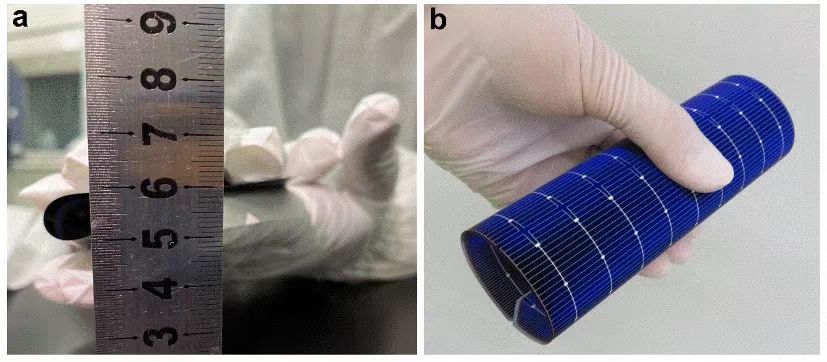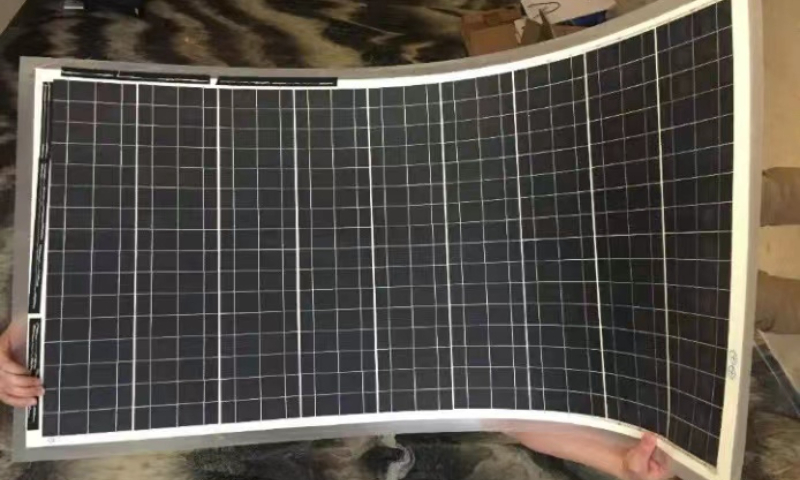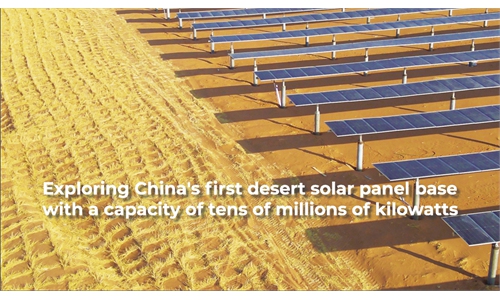Chinese researchers find way to manufacture highly flexible, paper-thin solar cells
Chinese researchers have developed a special technology to tailor the edges of textured crystalline silicon (c-Si) solar cells, based on which the solar cells can be bent and folded like thin paper, allowing for broader application and use.
The breakthrough was achieved by Chinese researchers at the Shanghai Institute of Microsystem and Information Technology (SIMIT) under the Chinese Academy of Sciences. The results have been featured on the cover of the May 24 edition of Nature journal.
The c-Si solar cells fabricated with the new technology can be 60 millimeters thin with a bending radius of about 8 millimeters.

According to the Technology Daily, c-Si solar cells are type of solar cell seeing fast development at the moment. They have advantages including long service life and high conversion efficiency, making them a leading product in the photovoltaic market.
Such c-Si solar cells have a market share of more than 95 percent, according to Di Zengfeng, deputy head of the SIMIT, who is one of the authors of the research paper.
Although c-Si solar cells were developed nearly 70 years ago, their use is still limited, the paper explained. Currently, the c-Si solar cells are mainly used in distributed photovoltaic power stations and ground photovoltaic power stations. Hopefully, such solar cells can be used in construction, backpacks, tents, automobiles, sailing boats and even planes.
They can also be used to generate clean energy for houses and a variety of portable electronic and communication devices as well as for transportation, according to the researchers.

Liu Zhengxin, a research fellow with the SIMIT, and another author of the paper, said that the study verified the feasibility of mass production, providing a technical route for the development of lightweight and flexible c-Si solar cells.
At the same time, the large-area flexible photovoltaic modules developed by the research team have been successfully applied in the fields of near-space vehicles, building photovoltaic integration and vehicle-mounted photovoltaic systems, Liu said.
The breakthrough was achieved by Chinese researchers at the Shanghai Institute of Microsystem and Information Technology (SIMIT) under the Chinese Academy of Sciences. The results have been featured on the cover of the May 24 edition of Nature journal.
The c-Si solar cells fabricated with the new technology can be 60 millimeters thin with a bending radius of about 8 millimeters.

Highly flexible, paper-thin c-Si solar cells Photo: Courtesy of the CAS
According to the Technology Daily, c-Si solar cells are type of solar cell seeing fast development at the moment. They have advantages including long service life and high conversion efficiency, making them a leading product in the photovoltaic market.
Such c-Si solar cells have a market share of more than 95 percent, according to Di Zengfeng, deputy head of the SIMIT, who is one of the authors of the research paper.
Although c-Si solar cells were developed nearly 70 years ago, their use is still limited, the paper explained. Currently, the c-Si solar cells are mainly used in distributed photovoltaic power stations and ground photovoltaic power stations. Hopefully, such solar cells can be used in construction, backpacks, tents, automobiles, sailing boats and even planes.
They can also be used to generate clean energy for houses and a variety of portable electronic and communication devices as well as for transportation, according to the researchers.

Highly flexible, paper-thin c-Si solar cells Photo: Courtesy of the CAS
Liu Zhengxin, a research fellow with the SIMIT, and another author of the paper, said that the study verified the feasibility of mass production, providing a technical route for the development of lightweight and flexible c-Si solar cells.
At the same time, the large-area flexible photovoltaic modules developed by the research team have been successfully applied in the fields of near-space vehicles, building photovoltaic integration and vehicle-mounted photovoltaic systems, Liu said.

